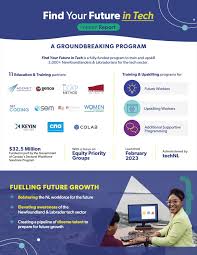The Advantages of Technology in Today’s World
Technology has become an integral part of our daily lives, revolutionising the way we work, communicate, and live. In this modern age, the advantages of technology are abundant and have significantly impacted various aspects of society.
Enhanced Communication
One of the most significant advantages of technology is its role in enhancing communication. With the advent of smartphones, social media platforms, and instant messaging apps, people can connect with others from around the globe in real-time. This has made communication faster, more convenient, and more accessible than ever before.
Increased Efficiency
Technology has also led to increased efficiency in various industries. Automation and digital tools have streamlined processes, reduced manual labour, and improved productivity. Businesses can now leverage technology to optimise operations and deliver better services to their customers.
Access to Information
The internet has democratised access to information, enabling people to learn about any topic with just a few clicks. Educational resources, research papers, news articles – all are readily available online. This easy access to information has empowered individuals to expand their knowledge and skills like never before.
Innovation and Creativity
Technological advancements have sparked innovation and creativity across various industries. From artificial intelligence to virtual reality, new technologies continue to push the boundaries of what is possible. Innovators are constantly developing new solutions that improve our quality of life and drive progress in society.
Improved Healthcare
In the healthcare sector, technology has revolutionised patient care and medical practices. From electronic health records to telemedicine services, technology has made healthcare more accessible and efficient. Medical professionals can now diagnose illnesses more accurately and provide better treatment options for patients.
In conclusion, the advantages of technology are undeniable. As we continue to embrace technological innovations, we open up new opportunities for growth, development, and positive change in our world.
Exploring the Advantages of Technology: FAQs on Communication, Efficiency, Innovation, and More
- What are the advantages of technology in today’s society?
- How has technology improved communication?
- In what ways does technology increase efficiency in industries?
- What is the impact of technology on access to information?
- How does technology drive innovation and creativity?
- What advancements in healthcare have been made possible by technology?
- Can you provide examples of how technology has transformed businesses?
- What are the benefits of using digital tools for productivity?
- How has technology changed educational practices?
What are the advantages of technology in today’s society?
In today’s society, the advantages of technology are manifold and pervasive. Technology facilitates seamless communication, connecting individuals across vast distances instantly. It enhances efficiency in various industries through automation and digital tools, leading to improved productivity. Access to a wealth of information on the internet empowers individuals to expand their knowledge and skills effortlessly. Technological innovations drive creativity and progress, pushing the boundaries of what is achievable. Furthermore, technology revolutionises healthcare by making medical services more accessible and improving patient care. Overall, technology plays a crucial role in shaping modern society by fostering connectivity, innovation, efficiency, and advancement in various aspects of life.
How has technology improved communication?
Technology has significantly improved communication by revolutionising the way we interact with one another. The advent of smartphones, social media platforms, and instant messaging apps has made it easier for people to connect across vast distances in real-time. Communication has become faster, more convenient, and more accessible than ever before, allowing individuals to stay connected with friends, family, and colleagues regardless of their physical location. Additionally, technology has introduced new modes of communication such as video calls and virtual meetings, enhancing the quality of interactions by enabling face-to-face conversations even when miles apart. Overall, technology has transformed communication into a seamless and efficient process that transcends barriers and fosters meaningful connections in today’s digital age.
In what ways does technology increase efficiency in industries?
Technology increases efficiency in industries in various ways. Automation processes, such as robotics and artificial intelligence, can perform repetitive tasks with precision and speed, reducing the need for manual labour and minimising errors. Digital tools and software streamline operations, allowing businesses to manage resources more effectively and make data-driven decisions. Communication platforms facilitate instant collaboration among team members, regardless of their physical locations, promoting faster decision-making processes. Overall, technology optimises workflows, enhances productivity, and ultimately improves the overall efficiency of industries across different sectors.
What is the impact of technology on access to information?
The impact of technology on access to information has been profound, transforming the way we seek, consume, and share knowledge. With the rise of the internet and digital platforms, information has become more accessible than ever before. Individuals can now access a vast array of resources, from educational materials to news articles, with just a few clicks. This increased access to information has empowered people to learn independently, stay informed about current events, and engage with diverse perspectives from around the world. Technology has democratised knowledge, breaking down barriers to learning and enabling individuals to expand their understanding of the world in unprecedented ways.
How does technology drive innovation and creativity?
Technology serves as a catalyst for driving innovation and creativity by providing tools and platforms that empower individuals and organisations to explore new ideas, experiment with novel concepts, and develop groundbreaking solutions. Through advanced technologies such as artificial intelligence, data analytics, and virtual reality, innovators can push the boundaries of what is possible, leading to the creation of disruptive products and services. By streamlining processes, enhancing collaboration, and enabling rapid prototyping, technology fuels a culture of innovation where creativity thrives and new possibilities emerge. Ultimately, technology not only facilitates the creative process but also inspires individuals to think outside the box and envision a future filled with endless possibilities.
What advancements in healthcare have been made possible by technology?
Advancements in healthcare made possible by technology have been transformative, enhancing patient care and revolutionising medical practices. Technologies such as electronic health records, telemedicine services, wearable devices, and medical imaging systems have greatly improved the efficiency and accuracy of diagnosis and treatment. Additionally, artificial intelligence and machine learning algorithms are being utilised to analyse vast amounts of medical data, leading to more precise diagnoses and personalised treatment plans. These technological advancements in healthcare have not only saved lives but also improved the overall quality of healthcare services provided to patients.
Can you provide examples of how technology has transformed businesses?
Technology has transformed businesses across various industries, revolutionising the way they operate and compete in the modern market. One significant example of this transformation is the adoption of cloud computing services, which have enabled companies to store and access data remotely, enhancing collaboration and scalability. Additionally, the integration of artificial intelligence and machine learning technologies has automated processes, improved decision-making, and personalised customer experiences. E-commerce platforms have expanded global reach and streamlined transactions, while digital marketing tools have revolutionised advertising strategies. Overall, technology has empowered businesses to innovate, increase efficiency, and stay competitive in an ever-evolving marketplace.
What are the benefits of using digital tools for productivity?
Using digital tools for productivity offers a multitude of benefits that can enhance efficiency and effectiveness in various tasks. These tools provide automation capabilities, streamlining processes and reducing manual errors. With digital tools, tasks can be completed faster, allowing individuals to accomplish more in less time. Additionally, digital tools often offer collaboration features that enable seamless teamwork and communication among team members, regardless of their physical location. By leveraging digital tools for productivity, individuals and organisations can boost their overall output, improve workflow management, and stay competitive in today’s fast-paced digital landscape.
How has technology changed educational practices?
Technology has revolutionised educational practices by offering innovative tools and resources that enhance the learning experience. With the integration of technology in classrooms, students now have access to a wealth of information at their fingertips, enabling them to engage with educational content in more interactive and personalised ways. Online learning platforms, virtual classrooms, and educational apps have made learning more flexible and accessible, allowing students to study at their own pace and convenience. Additionally, technology has facilitated collaborative learning through video conferencing, online forums, and shared documents, fostering communication and teamwork among students. Overall, technology has transformed educational practices by promoting digital literacy, expanding educational opportunities, and preparing students for the demands of the modern world.




